#Oregon Coast Trail
Text
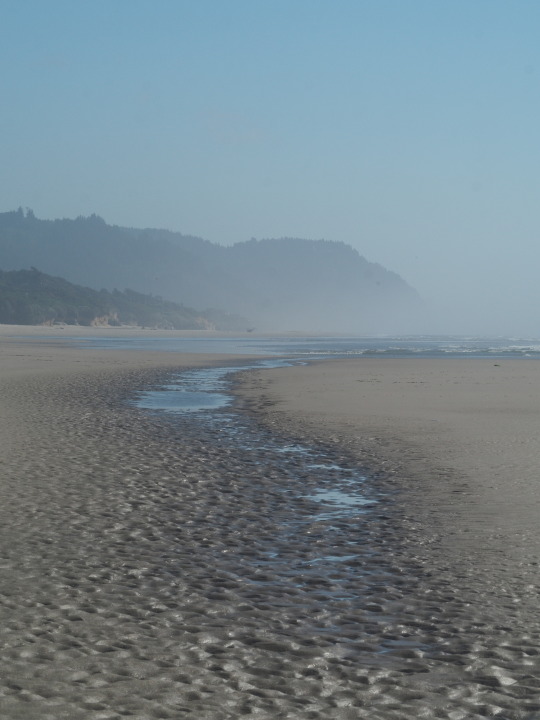
Talking about the future, while not talking about the future: walking from Governor Patterson State Park to Yachats on the old 804 trail and the new Oregon Coast Trail. 28 August 2022.
17 notes
·
View notes
Video
youtube
HIKERS DREAM. Episode 10. CJ Cosby INTERVIEW
Colton 'CJ' Cosby shares further his hiking experiences and his physical challenges he must manage. Hosted by Dean Val Vitols.
https://www.duanethegreatwriter.net/
0 notes
Text

Samuel Boardman Scenic Trail, Oregon coast
435 notes
·
View notes
Text

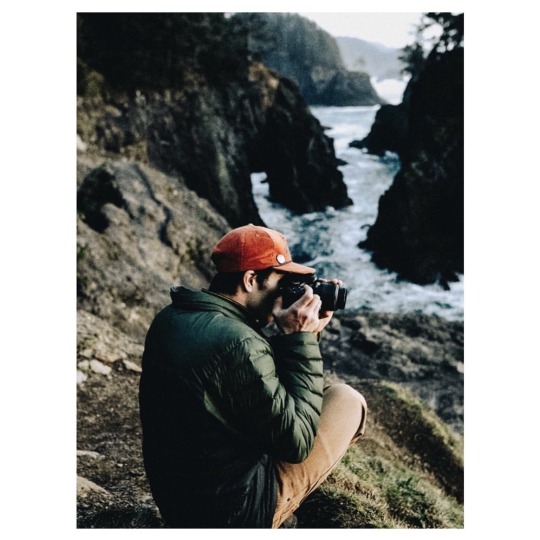
One of my favorite moments from my 2 month roadtrip through Oregon and California. The moments I remember most have to be meeting random people along my journey. Getting to hear an individuals story of there passions and goals and why they are exploring is something I never get tired of. I think it all comes down to simplicity for most of us. To look back at memories and remember moments that mean something.
#pnw#photography#landscape#explore#adventure#lifestyle#nw#moody#trees#oregon#west coast#coast#ocean#hike#trail#roadtrip#lifestylephotography#view#nature#pacific nw#oregoncoast#oregon life#oregon camping#oregon explored#coastline
10 notes
·
View notes
Photo

Shaedon Sharpe
#shaedon sharpe#basketball#sports#nba#nba basketball#Illustration#illustrators#illustrators on tumblr#portland trail blazers#portland trailblazers#portland#trailblazers#Trail Blazers#pdx#pnw#pacific northwest#west coast#oregon#moda center#rose garden#moda center at the rose quarter#lloyd center
14 notes
·
View notes
Text
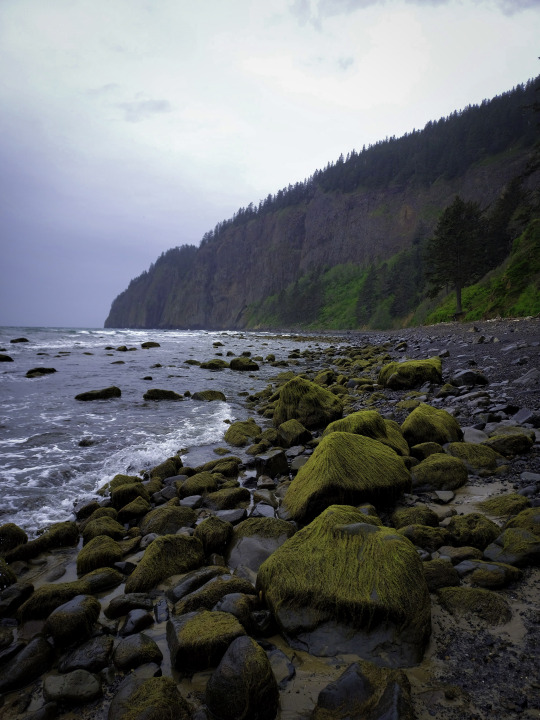
Cape Lookout, Oregon
#personal#oregon#pnw#coast#i did not see one person on the beach or on the trail#most everyone hikes cape lookout trail#4.29.2022
80 notes
·
View notes
Text
The Ultimate American Road Trip Bucket List: 10 Must-Drive Routes Across the U.S.
Road trips have been an American tradition for decades, and the United States has some of the most beautiful landscapes in the world to explore. From coast to coast, there are endless opportunities to see iconic landmarks, national parks, and unique cities. Here are the top 10 classic road trips in the United States.
Route 66 – Chicago to Santa Monica
Route 66 is one of the most famous highways…
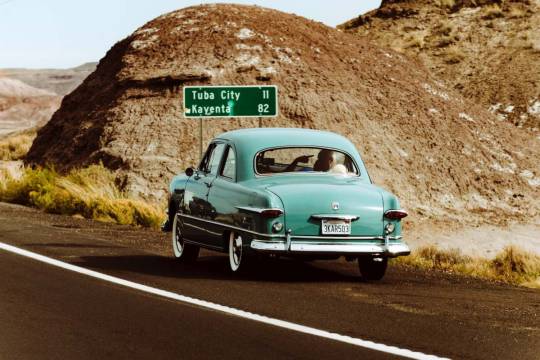
View On WordPress
#Blue Ridge Parkway#Florida Keys#Great River Road#Oregon Trail#Outer Banks#Pacific coast highway#road trips#Route 66#The Black Hills#The Great Northern#The Loneliest Road#United States
2 notes
·
View notes
Photo

Deer are probably waiting in ambush by rozoneill https://flic.kr/p/p9Topu
2 notes
·
View notes
Video
Hiking Has Been My Sanctuary by Mark Stevens
Via Flickr:
While walking along the Grove of Titans with a view looking to the northeast at nearby coast redwoods in Jedediah Smith Redwoods State Park. My thinking in composing this image was to capture more of a leveled-on view with the trail being a leading line into the forest. By focusing on the forest to my front, I felt I was able to capture something along the lines of the "impact of less" and having the forest spill off the image edges, so to speak.
#Azimuth 36.70#Blue Skies#California and Oregon Road Trip#Coast Redwood#Day 8#DxO PhotoLab 5 Edited#Evergreen Trees#Evergreens#Forest#Forest Landscape#Grove of Titans#Hiking Trail#Impact of Less#Jedediah Smith Redwoods State Park#Klamath Mountains#Landscape#Landscape - Scenery#Looking NE#Looking Up#Looking up at Sky#Looking up at Sky through Trees#Looking up at Sky thru Trees#Looking up to Sky#Nature#Nature Trail#Nikon D850#No People#Northwest U.S. Coast Ranges#Outside#Pacific Ranges
2 notes
·
View notes
Video
Untitled by Alyson Bowen
Via Flickr:
Exploring bike paths in Northeast Portland in a beautiful autumn afternoon. November, 2023. Portland, Oregon. 120 Kodak Gold 200. Holga 120CFN.
#pdx#holga#autumn#pathways#trail#Oregon#west coast#square format#film#medium format#color film#plastic camera#flickr
0 notes
Note
bogleech do you know anything about trilobite beetles? im trying to learn more about them but all i can find is videos and articles about how rare they are. i want to learn more about them, like why they have a suction cup on their tail, or why they are orange, or why their head is so small
Trilobite beetles are an example of extreme sexual dimorphism and a "larviform" adult stage; the adult males are tiny flying beetles, but the adult females resemble giant versions of the larvae!

The colors are actually for the same purpose as the lights on an airport runway; the male can spot them from above, and follows the orange trail to where he needs to be, as seen here!
The group containing these beetles is closely related to fireflies (or "lightning bugs"), and in fact fireflies have the same type of "trilobite larvae!" This is a baby firefly:

But in fireflies, the tiny head is specifically an adaptation for preying on snails, the ONLY thing most firefly species ever eat! The head can even extend into the snail's shell on this turtle-like neck you see here.
Trilobite beetles don't have the extending neck, nor do they have sharp predatory mandibles, so they do not eat snails. Unfortunately that's all we know; trilobite beetles never live long in captivity no matter what materials they're offered, so their diet is a mystery, and that's not unusual for rainforest insects. There's many we know almost nothing about!
I should also mention, there are also some firefly species with the larviform female! They don't keep looking EXACTLY like the larvae do, but close:

So it's actually possible to have your own version of "trilobite beetles" hiding around right in North America! I've actually seen one of these species (just one) right outside our Apartment here in Oregon:

The West Coast of the USA has no fireflies who light up as adults, but it has fireflies who light up as larvae AND have these trilobite ladies!
419 notes
·
View notes
Text
My AC has been shoddy. My dad ripped the washing machine valve out so I'm living the next week until I move out w/o running water. There's a heat wave this week. Gas prices are at an all time national high as I'm about to drive a Uhaul across the country to an apartment I had to get in the middle of a housing bubble. I s2g if one more thing goes wrong I'm gonna walk into the woods/desert depending on where I am and y'all will never hear from me again.
#i s2g I'm paranoid we're gonna break down in the middle of the great plains and I'm gonna have to Oregon Trail my shit to the west coast#catch me with a team of oxen while sitting on the hood of a uhaul#all my belongings melting in the back#my parents who wanted to help get me out there died of dysentery nine miles back stranger#if you got any supplies i could take afore i start to cross thru mormon country i'd be much obliged#or I'll march my ass back to appalachia and find a nice cave#bc I'm done. I'm done. I'm at my limit.
0 notes
Note
Can you elaborate the story of the ”Free Willy” orca (forgot his name). From my understanding the orca couldn’t survive in the wild and imprinted on hunans to the point that he seeked out human compaionship
Oh Keiko. His is a sad story. In 1979, he was tragically captured from his native Icelandic waters as a calf and, after bouncing around for several years, was sold to an amusement park in Mexico City that would eventually become Six Flags Mexico. It was here that he found fame as the star of Free Willy, a very sweet and very fictional story (a favorite of mine as a child!) that later spawned a trilogy, all while convincing the public that it’s easy to free a whale.

The tank you see in the movie is the same tank Keiko lived in during his time in Mexico. Intended to house dolphins, it was incredibly undersized, and the water was far too warm for an orca. Worst of all, he was isolated from others of his kind, with only the companionship of his human caregivers and a few bottlenose dolphins. The years of poor husbandry took their toll on poor Keiko, and he was lethargic and in ill health when his story because known throughout the world.
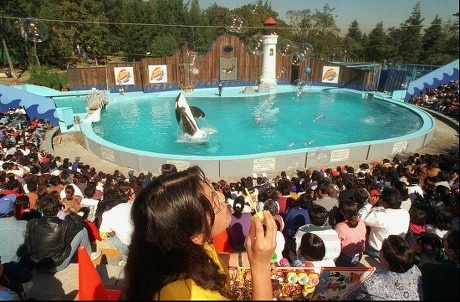
Although many parties were involved in what happened next, Warner Bros. studios (the filmmakers behind Free Willy) and the Humane Society of the United States (HSUS, my beloathed) were at the forefront. Once it became public knowledge that the real Willy was not, in fact, returned to the wild to live with his family and was still living in that too-tiny pool, many of Keiko’s fans (mainly children) began writing letters asking for their favorite cetacean movie star to be released.

Doesn’t that warm your heart? *she says sarcastically*
Some time—and an incident in which Michael Jackson (yes, that Michael Jackson) tried to purchase the whale for his personal collection—later, Keiko’s owners relented. It was decided by the newly formed Free Willy-Keiko Foundation, founded by Warner Bros. and cell phone mogul Craig McCaw (and still in operation to this day, unfortunately), that it was time to make fantasy a reality and set Keiko free. In 1996, Keiko was transferred to the Oregon Coast Aquarium for rehabilitation, where he would spend two years.


Under the quality husbandry and veterinary care Keiko received in Oregon, his health began to improve. In my opinion, this beautiful habitat, with trainers who loved and cared for him, should’ve been his forever home. One would think this was the plan all along, considering his trainers were still doing waterwork with him. That doesn’t exactly scream “this animal is a candidate for release!”

But the HSUS and Free Willy-Keiko Foundation had promised the children of the world that Keiko would return to the wild. Think of the children, people.

In 1998, Keiko tasted the crisp saltwater of the Icelandic seas for the first time in nearly two decades. For the next four or so years, Keiko lived in a sea pen, with the intentions of gradually habituating him back to his native environment. Over time, his trainers took him on longer and longer “walks” in the open ocean. One day in 2002, the walk didn’t end.
Keiko was free.
15 months later, he was dead.
The cause of death was pneumonia, the most common disease of cetaceans both in the wild and in human care. He was 27 years old (average life expectancy of a male orca is about 30 years).
Perhaps it would’ve been worth it, had Keiko spent those last 15 months with his long-lost family. But he didn’t. Though he was occasionally observed trailing pods of orcas, Keiko never rejoined a wild pod. Instead, he spent those 15 months traveling the coasts of Iceland and Norway seeking out the only family he knew. Humans.

Keiko would approach swimming children, allowing them to ride on his back as he had with his trainers over the years. He would follow boats in search of food and companionship, as his caregivers had interacted with him from boats during his ocean walks. These escapades became so frequent that the local government passed ordinances to stop its citizens from interacting with the whale. Although the HSUS claimed otherwise, Keiko was never again a truly wild whale. He was a whale dependent on humans, humans who ignored the advice of experts and tried to bring fiction to life. In 2009, the journal Marine Mammal Science did a retrospective review of Keiko’s rehabilitation and release. They determined it was a failure.
Despite this, Keiko remains a poster child for anti-zoo activists. The still-hypothetical Whale Sanctuary Project (my even more beloathed) uses Keiko as an example of why their experiment is a good idea, tugging at heartstrings of well-meaning animal lovers like HSUS did all those years ago.

In reality, Keiko was quite possibly the worst candidate imaginable for release. He was a fully mature male, with a history of poor health, who had spent decades in the care of humans with absolutely no contact with others of his kind since he was basically a toddler. The decision to release him was made entirely on emotion and carried out by movie executives and animal rights activists. For further insight into the political and financial woes of the release, I highly recommend Killing Keiko by Mark Simmons, one of Keiko’s caregivers throughout the rehabilitation process.
RIP Keiko. You were a beautiful, sweet man who inspired millions 🐳
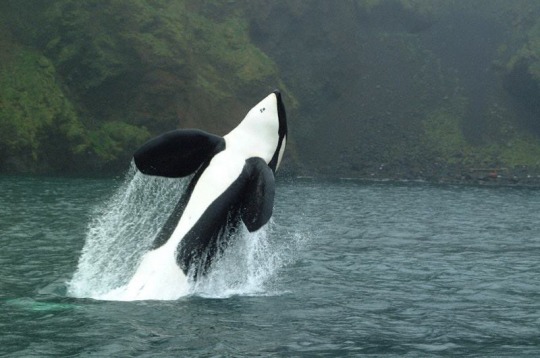
#keiko#free willy#orcas#killer whales#cetaceans#marine mammals#killing keiko#humane society of the united states#whale sanctuary project#answered asks
9K notes
·
View notes
Text
Okay, mis petite amores, today’s fish is a little less flashy, but still - they glow. In this post you will learn about fish candles, overland grease trails, and a theory on the state of Oregon.
I would like to introduce you to Thaleichthyes pacificus, also known as the eulachon (you-luh-con, in the lower 48; hooligan in Alaska; oolighan in Chinook Jargon)Also known as the candlefish.
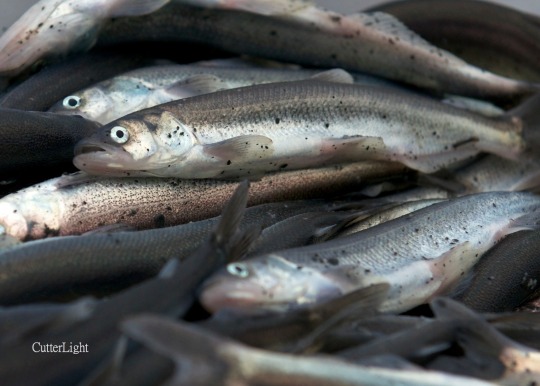
These are tiny smelt - but they are also extremely fatty fish.
With up to 15% of their body weigh being fat tissue, if you dry one out and string it on a wick, YOU CAN LITERALLY BURN IT LIKE A CANDLE.
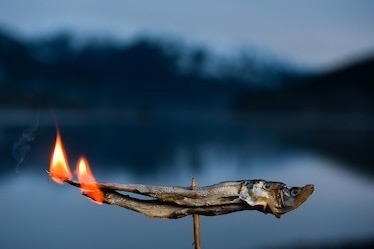
They’re anadromous, like salmon, so they live in the ocean during most of their lives but spawn in freshwater rivers - though they’re rather less predictable.

Indigenous communities on North America’s Pacific coast included eulachon as part of their diet, and often processed them for oil - which is done by letting them rot in a hole in the ground for about a week before adding boiling water and skimming the oil off the top.
Eulachon oil was so widely traded between coastal tribes and inland tribes that the trade routes were called grease trails.
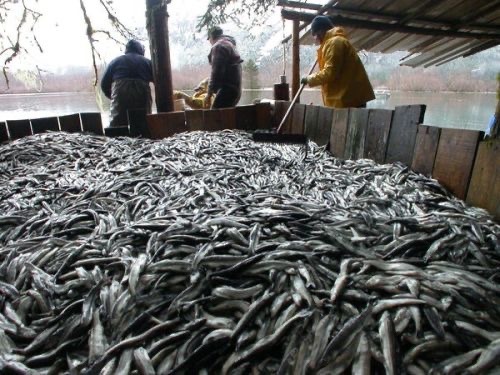
In fact, one archaeologist argued in a paper that the name of the state of Oregon was derived from the Chinook Jargon word - oolighan.

A few distinct population segments of eulachon are threatened or endangered, so at this point I would not in good conscience recommend setting any on fire.
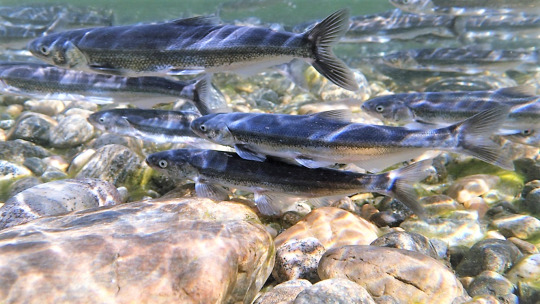
87 notes
·
View notes
Text

Jeff Green and Jerami Grant
#Jeff Green#Jerami Grant#basketball#sports#nba#nba basketball#denver nuggets#portland trail blazers#portlant trailblazers#portland#trailblazers#trail blazers#nuggets#denver#oregon#colorado#co#or#west coast#pacific northwest#pnw#mountain west#rocky mountains#rocky mtns#ball arena#moda center#rose quarter
18 notes
·
View notes
Text
Suddenly, Letters from Watson dumps us in the middle of the Great American Desert (part 1 of "On the Great Alkali Plain," 2/7/24). This is not anywhere I expected to be transported from London, and the contrast makes the Mountain West feel exotic for a minute.
The Great American Desert -- stretching from about Grand Island, Nebraska to the Sierras and pretty much the entire north-south length of the U.S. -- had become a thing of legend since explorers' accounts in the 1820s. When Dad and I drove across it in 2022, we talked about how incredibly daunting it must have been for emigrants seeking their land of milk and honey on the Pacific coast.
The way we went, out I-80, Nebraska shifts from green to gray as it rises toward the Rockies. After a while, the wind picks up as you go uphill into Wyoming. There's a lot of Wyoming, and after Cheyenne and Laramie (both of which would be small towns in most states), it's very, very empty. When we finally started the descent toward Salt Lake City, and the little valleys beside the road turned green with running water, it was truly like entering paradise.
Of course, in 1847, Salt Lake City was just barely being settled, as Brigham Young led his Latter Day Saints west from Council Bluffs, and its location wasn't part of the U.S. yet.
The Mexican-American war had started the prior year, 1846, and was still going. Spring-summer of 1846 saw the Bear Flag Revolt in California, followed by the U.S. just annexing the state. Gold wouldn't be discovered at Sutter's Mill until 1849, so while emigration to California happened -- the Donner Party made their ill-fated trip in 1846-47 -- it wasn't anything like the scope of movement along the Oregon Trail.
As far as I can tell, "Sierra Blanco" is not a real place. There's a Sierra Blanca in New Mexico -- which would fit with all the specific landscape, plus White Sands National Park in New Mexico specifically has alkali flats. Last time I drove through New Mexico on I-40, in late 2018, it was delightfully desolate, so I can buy that in 1847, it seemed completely empty, with even the native peoples avoiding some stretches.
Why anyone would be crossing New Mexico is a mystery, since neither Arizona nor southern California were much settled by Americans. There was some sort of wagon route across New Mexico used by U.S. soldiers during the Mexican-American War, so if I'd expect anyone to be about, it'd be the U.S. Army.
Utah, now, is downright famous for its salt flat, but that's west of the site of Salt Lake City.
Regardless, parties screwing up their trip to the west by taking an imprudent shortcut or mistaking the route was definitely both a thing that happened and, thanks to the Donner Party, a trope. Our haggard and starving traveler sounds about right.
Then he reveals a Plucky Innocent Victorian Child.
That "pretty little girl of about five years of age" is the absolute ideal of Victorian childhood, being perfectly behaved, utterly imperturbable, determined to see the best in all things, sweet, trusting, and looking forward to being reunited with her mother in heaven.
This kind of child is why Louisa May Alcott was seen as innovative for writing Little Woman about girls who worked on their character flaws. (This is also the ideal the March girls were being aimed at. Polly in An Old-Fashioned Girl comes closer, but even Polly would have been upset about being hopelessly lost in the desert with no water.) Contrast this with the street urchins that Holmes employs in his investigation, who are good enough sorts but scrappy, resourceful, and street smart.
Ordinarily, a Victorian child who was utterly sweet and pious would be a cinnamon roll, literally too good, too pure for this world, and thus would die beautifully but tragically before long. Being lost in the desert seems ideal for this, but --
She turns to prayer, and since someone must survive in order for this scene to be relevant,
Yes, darn it, I am on the edge of my seat to know what happens. I'm also grateful that crossing the Great American Desert in 2022 was a quicker process. I've been reading Carey Williams' old-but-interesting California: The Great Exception, which has a lot to say about how 19th century isolation shaped California's economy and power structure, not always for good. But that's neither here nor there -- I don't think we're headed to California.
21 notes
·
View notes
